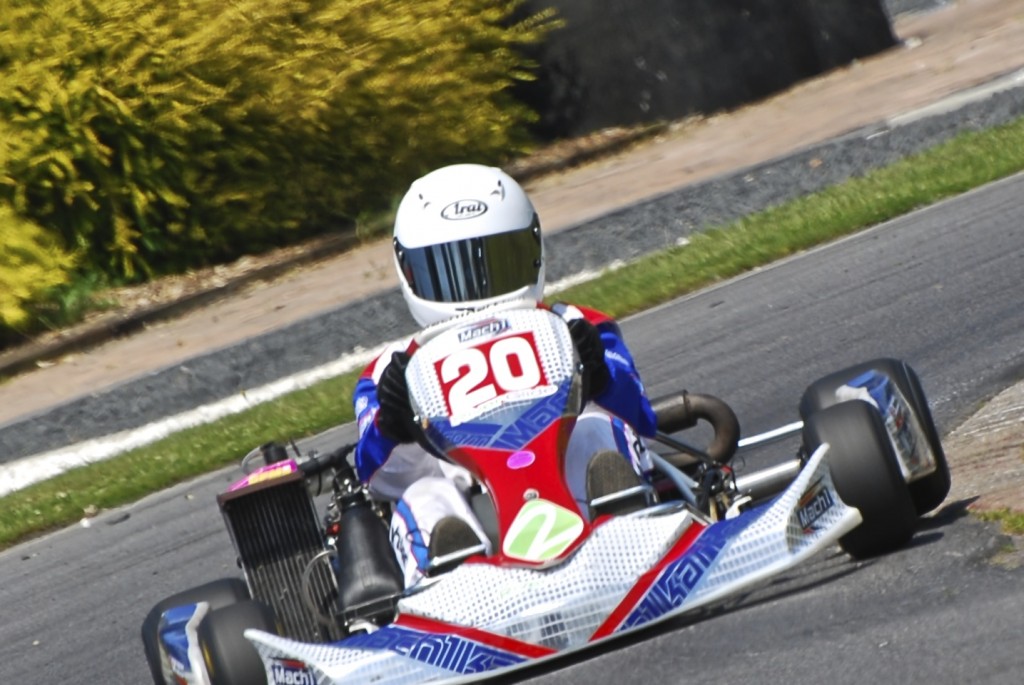A few years ago, to explain what goes wrong for many organisations that “go agile”, I wrote an article called “Putting the Kart before the Horse” [1].
Go-karting is where most of the current Formula One racing drivers first learned the basics of race-craft. Antony Marcano, a former kart racer himself, recounts a father-and-son racing experience that helps him explain what goes wrong for many organizations that adopt Scrum as their first attempt to “go agile.”
In this article I explained how novice drivers try to go as fast as possible rather than trying to master the racing line:
At the open practice session my son and I attended, novice drivers seemed to approach their first lap as if it really were as easy as experienced drivers make it look. They floored the throttle and flew down the straight only to crash—painfully and expensively—into the barrier at the first hairpin turn.
I went on to liken this to how many teams adopt agile…
Organizations starting their transition to agile methods with Scrum are much like the novice drivers trying to go fullthrottle before learning how to take the corners. Before being able to truly bend and change their software with speed and ease, they fly into short iterations and frequent incremental product delivery—crashing painfully into the barrier of hard-to-change software.
It was my son’s first experience in a go-kart. We started by driving slowly with him following me to learn the racing line. We gradually went faster and faster. Soon, we were the quickest drivers on the track.
Since then, he has gone on to advance further and further in his racing. Back then, we were in slow, 35mph go karts. This year he started racing for a team in race-tuned karts (see photo). The driver-coach in the team watched him driving on his first few attempts in his new high-performance machine (70+ mph, super-car acceleration). While he was reasonably quick, he wasn’t smooth.

His coach told him “slow down”. His coach said “whatever speed you can do while still driving on the ideal racing line is the speed you should be going”. My son went out again. Initially slower than he was before, his speed progressively built… we watched his lap-times improve dramatically.
Yet again, we relearned this lesson: slow is smooth–smooth is fast.
For some reason, I see teams who are novices in agile development make the same mistake, however, not always feeling like they have a choice. Kanban might make it easier to start from where you are and gradually improve but it’s ok if you’ve decided to start with Scrum. When starting with Scrum, start slow, focus on doing fewer things well first then progressively improve. On a course I gave recently, one of the attendees said “but how do you get management and marketing to back-off enough to allow us to slow down?”
My answer: avoid going faster than you can. But if you feel compelled to go faster, make it a business decision. Help them understand that there is a risk that whatever time you save now will cost you more in the future. Help them understand all the effort you’ll spend repairing the damage that going too fast will cause. Pretty soon you’ll be spending so much time fixing problems and struggling to adapt hard-to-change code that there will be little capacity left to add new features. Essentially, incurring a “Technical Debt” .
As a general rule, I always try to start something new, slow and steady. I only go as fast as I know I can while predictably and sustainably delivering. I’m mindful of business pressures but experience has shown me that by focusing on “making things right” we can deliver smoothly, build trust and progressively become faster.
—————–
[1] You can read the original article here: Putting the Kart before the Horse? – published in Better Software Magazine, 2009
My son’s story is continued here: http://damanimarcano.com
Is updated here: https://www.facebook.com/DKMRacing
And here: https://twitter.com/DKMRacing
And here (updated 03-02-2014)…
UPDATE [11-12-2013]: Damani Marcano finished his first ever season 3rd in the Hoddesdon Kart Club Championship Junior Rotax Formula at Rye House, the track that started Lewis Hamilton’s career. This achievement is significant since, as a novice license holder, Damani had to spend the first half of the season starting every heat from the back of the grid. Find out what happens next season by following his story on Twitter and/or Facebook. Who knows, by adding to his ‘likes’ / ‘followers’ you may become a part of his story by helping him become more attractive to a potential sponsor.
